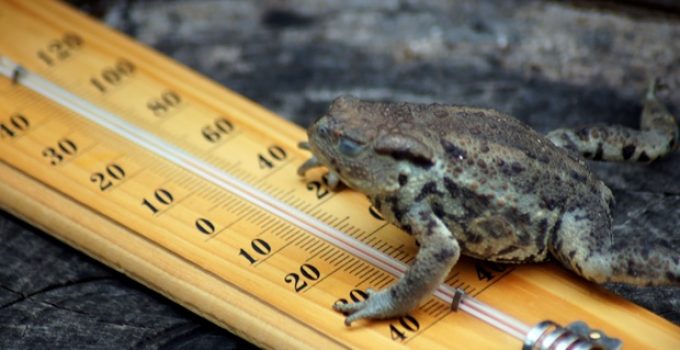Are Frogs Cold-Blooded?
Yes, frogs are cold-blooded animals. More precisely, they are ectotherms, which means they rely on external sources like sunlight or warm surfaces to regulate their body temperature. Unlike mammals, frogs cannot generate heat from within. This physiological trait shapes nearly every aspect of their lives—from metabolism to hibernation, and even their vulnerability to climate change.
This article explores how frogs manage their body heat, why it matters for their survival, and what their cold-blooded nature means for ecosystems at large.
Dive Deeper
- What Does “Cold-Blooded” Really Mean?
- How Frogs Regulate Temperature
- Surviving the Cold: Frog Hibernation
- Heat and Its Limits
- Why This Matters for Ecosystems
- 🎯 Final Thoughts
- 📚 References
🔬 What Does “Cold-Blooded” Really Mean?
Cold-blooded animals—more accurately called ectotherms—do not generate their own body heat. Instead, they rely on external sources like sunlight, water temperature, or warm surfaces to regulate their internal temperature.
Frogs are ectothermic amphibians. Their body temperature matches their surroundings, affecting everything from their metabolism to their behavior.
| Characteristic | Cold-Blooded (Ectothermic) Animals |
|---|---|
| Internal Heat Production | Minimal to none |
| Body Temperature | Changes with environment |
| Metabolism | Slows in cold, speeds up in warmth |
| Examples | Frogs, reptiles, fish, invertebrates |
🌡️ How Frogs Regulate Temperature
Although frogs don’t maintain a constant internal temperature like mammals, they use various behavioral adaptations to control their body heat:
- Basking in sunlight to warm up
- Retreating to water or shade to cool down
- Burrowing into mud during temperature extremes
- Changing activity patterns, such as being nocturnal in hot climates
📊 Interesting Stat: A frog’s metabolic rate can drop by up to 70% when ambient temperatures fall below 50°F (10°C), helping them conserve energy during cold spells [1].
❄️ Surviving the Cold: Frog Hibernation
In temperate climates, frogs face freezing temperatures during winter. How do they cope?
- Hibernation: Frogs enter a state of metabolic depression.
- Freeze tolerance: Some species, like the wood frog (Rana sylvatica), can survive partial freezing by producing glucose and urea as cryoprotectants [2].
- Burrowing: Aquatic frogs may rest at the bottom of ponds, while terrestrial frogs burrow into soil or leaf litter.
📊 Fascinating Fact: The wood frog can survive with up to 65% of its body water frozen, and resume normal function once it thaws in spring [3].
🔥 Heat and Its Limits
While frogs need warmth, excessive heat can be deadly:
- Above 95°F (35°C), many frog species experience heat stress, leading to dehydration and metabolic failure [4].
- Frogs avoid overheating by staying in moist microhabitats or becoming more nocturnal.
Moisture is key—frogs lose water through their skin, so staying cool also means staying hydrated.
🌍 Why This Matters for Ecosystems
Because frogs are cold-blooded:
- They are sensitive to climate change and habitat loss.
- Temperature fluctuations directly impact their growth, reproduction, and survival.
- Frogs act as bioindicators, signaling ecological health based on their responses to environmental stressors.
📊 Conservation Note: According to the IUCN, nearly 41% of amphibian species are currently threatened with extinction, partly due to rising temperatures and habitat degradation [5].
🎯 Final Thoughts
So, are frogs cold-blooded? Absolutely—and their ectothermic nature is more than a biological label. It’s a key to understanding their survival strategies, environmental needs, and the delicate balance they maintain with nature. Protecting frogs means protecting the ecosystems they reflect—and depend on.
📚 References
- Lillywhite, H. B. (2006). Frog metabolic responses to temperature change. Journal of Experimental Biology, Link.
- Storey, K. B., & Storey, J. M. (2017). Molecular physiology of freeze tolerance in wood frogs. Comparative Biochemistry and Physiology Part A, Link.
- Costanzo, J. P., et al. (1997). Physiological responses to freezing in the wood frog. American Journal of Physiology, Link.
- Brattstrom, B. H. (1963). Temperature tolerances of amphibians. Herpetologica, Link.
- IUCN Red List (2024). Amphibians under threat. Link
